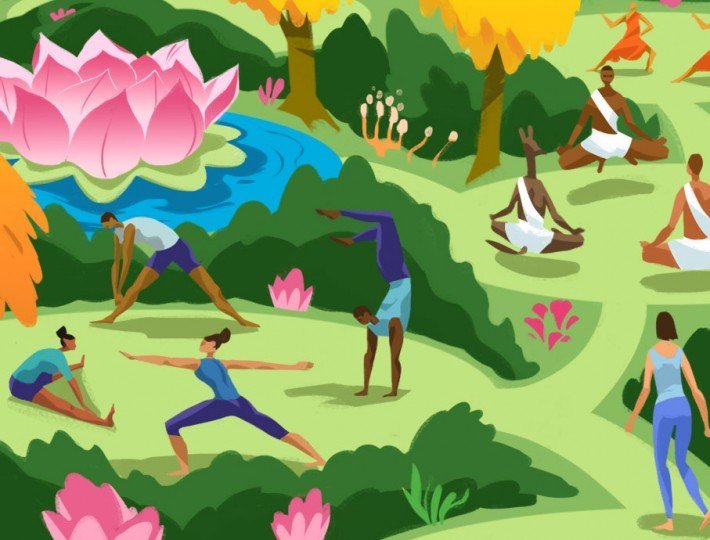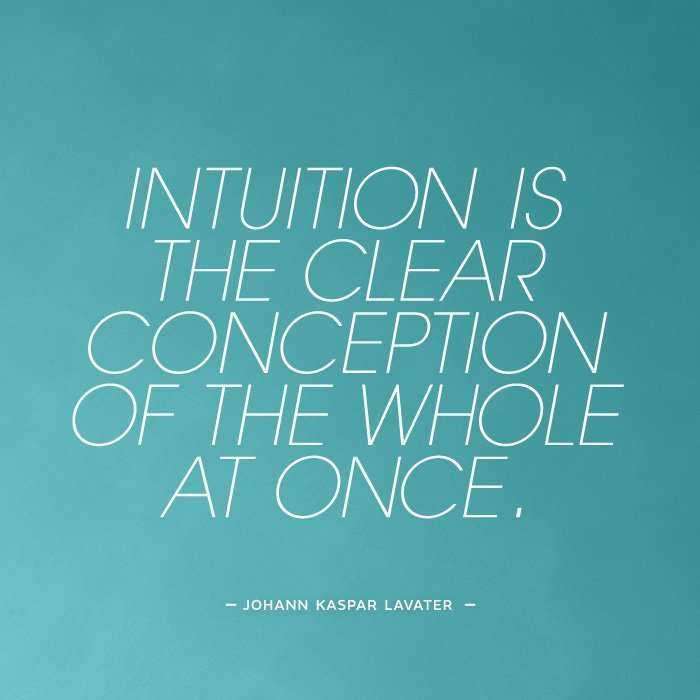If you’re curious about meditation you are probably well aware of its ubiquity and its benefits. The marines meditate. Derek Jeter meditates. The Seattle Seahawks, long-term prisoners, public school students, Wall Street traders, and some of the world’s best doctors and nurses all meditate. In 2007, The National Institutes of Health found that over 20 million Americans had meditated that year and that number has only increased since then. The benefits associated with meditation include decreases in stress, inflammation, and loneliness, and increases in immune function, positive emotions, compassion, focus, memory, and creativity. But with all this talk about mindfulness practices, you may still feel like you don’t understand what it’s all about. Do you really know what it means to meditate, and would you even know where to start?
How to Think about Meditation
One of the reasons it can be hard to understand meditation is that collectively we still aren’t very good at talking or thinking about it. The different authorities on meditation—from spiritual teachers to psychologists—each have their own definition of what meditation means and a different description of how it works. And yet, meditation research and popular media often make it seem like all types of meditation work in the same way. This can be confusing. In a lecture a few years ago, John Dunne, associate professor in the Department of Religion at Emory University and one of the most prominent historians of Buddhist meditation and philosophy as well as one of the primary collaborators in meditation research today, warned that researchers still don’t have a very good idea of what meditators are actually doing when they are meditating. The language that meditators use to describe their technique is often not very concrete or specific. Scientists are just beginning to try to come up with general hypotheses about why meditation has the positive effects it does—the brain changes that go along with meditation are almost entirely unknown.
One of the reasons it can be hard to understand meditation is that collectively we still aren’t very good at talking or thinking about it.
Another reason the world of meditation can be difficult to penetrate is due to the wide-ranging variety of practices and their often subtle differences. In Buddhist centers, yoga studios, ashrams, hospitals, prisons, and schools, meditation is taught in different ways. Many experts in meditation share certain goals and basic principles but disagree on major points about the practice. The interest in secular versions of meditation has led many instructors originally trained in religious traditions such as Buddhism or Hinduism to change traditional styles of teaching. Of course, these religious meditations—from Sufi twirling to Franciscan prayer—are still widely available as well. Modern technology also provides a new channel for contemplation through apps and podcasts, but many of these marketplace-driven tools lack context about the origins of the practices offered, preventing practitioners from going deeper than one-off guided sessions.
Clearly, for someone looking to better understand meditation and build a practice, figuring out where to begin can be difficult. Ultimately, the most important things are to find a system that’s the right fit for your life and beliefs and also to find a good teacher. There are meditations that you’re going to love and meditations you won’t like at all. There are teachers who will work with you wonderfully and those who won’t. Remember that no meditation instructor will know everything, not even a master. Every teacher will offer a certain perspective and is still learning through his or her own practice. Also, similar to the process of getting in shape, it’s important to remember that meditation is an ongoing progression without a single end goal, but rather, lots of unique milestones along the way. Taking these views into consideration will help you find the meditation practice, instructor, and community that fit you best. You don’t need to learn about every form of meditation or seek the highest one—you just need to find the one that suits you where you are now. As your journey continues, you’ll learn more and find new practices that address your evolving needs.
A General Overview of Schools of Meditation
There are thousands of different kinds of meditation practices in the world, and they can be classified in many ways, such as by their historical origins, techniques, or goals. Each practice can be thought of as belonging to a larger meditation family that is more or less distantly related to others. Here we’ve listed some of these families based on the names that you’re most likely to hear. This isn’t the only way to group meditations together, but it should be helpful for giving you a general understanding of the landscape.
Mindfulness
Besides the word meditation, mindfulness has become the most generic term for contemplative practice in the Western world. The word is a translation of the Pali word “sati” (“smṛti” in Sanskrit), a mental quality having to do with paying attention to an object of meditation and remembering to stay present. It is has been an essential aspect of Buddhist meditation from the tradition’s very beginning. In the modern context, mindfulness most often refers to a secularized and modified version of Buddhist practice called “vipassanā,” meaning “clear-seeing” or “insight”). In Buddhist contexts, vipassanā practices involve paying attention to various aspects of experience, such as your thoughts, emotions, and physical sensations, in such a way that you notice that they are impermanent, have an element of dissatisfaction in them, and are not you. This is said to lead to becoming detached and somewhat disinterested in everything, resulting in the end of suffering, which is the primary reason to meditate in this school of thought. The modern mindfulness movement is centrally influenced by these Buddhist themes, but its methods are more often described as simply bringing more awareness to the present moment without judging yourself. An example of this would be paying attention to the sensations of washing dishes rather than washing them absentmindedly while planning your day. The goal of modern mindfulness in secular contexts is usually stress reduction and other health and personal benefits.
Vipassanā practices involve paying attention to various aspects of experience, such as your thoughts, emotions, and physical sensations.
Mindfulness-Based Stress Reduction (MBSR)
MBSR is a form of mindfulness practice created by Jon Kabat-Zinn, Ph.D., professor of medicine emeritus at the University of Massachusetts Medical School. He developed the technique in 1979 as a way to help people suffering from stress, pain, and illness who had not responded to other clinical treatments. He drew from a wide variety of sources, including multiple Buddhist teachers and traditions, Indian yogic methods and philosophy, and biological, psychological, and psychiatric research, while attempting to remove all religious symbolism, philosophy, and language from the meditation methods. MBSR and other mindfulness-based interventions are now used to address depression, addiction, eating disorders, anxiety, social connection, and many other aspects of mental and physical health and are widely taught in hospitals, universities, private health clinics, and schools. They are now the primary forms of meditation used in meditation research studies, which you can find out more about in the Mindfulness Research Guide, a comprehensive database of all studies on MBSR and other mindfulness-based clinical interventions.
Transcendental Meditation (TM)
TM is a trademarked meditation method and international organization founded by Maharishi Mahesh Yogi, an Indian meditation teacher who had a strong following in India before becoming popular internationally in the 1960s and 1970s. You’ll most likely have heard of TM because of its storied and vibrant history. In the U.S., TM’s popularity exploded when the Maharishi, a title meaning “great sage,” became the spiritual teacher of the Beatles. Many celebrities today practice TM as well, including David Lynch, Russell Brand, Russell Simmons, Gwyneth Paltrow, and Ellen Degeneres. TM was the first major subject of research about the mental and physical effects of meditation, often because TM-affiliated scientists conducted the research. The Maharishi’s teaching was a particular expression of his own training in meditation and Vedanta, an ancient Indian spiritual philosophy. To date, thousands of people around the world have been trained to teach TM, though not necessarily in the context of its spiritual origins. The primary TM technique is silent repetition of a mantra, a sacred sound, in order to reduce stress, experience blissful and quiet states of consciousness, and ultimately to reach enlightenment, which the Maharishi defines as experiencing “inner calmness, that quiet state of least excitation, even when we are dynamically busy.”
The primary TM technique is silent repetition of a mantra, a sacred sound, in order to reduce stress, experience blissful and quiet states of consciousness, and ultimately to reach enlightenment…
Religious Meditative Traditions
This is a big family that includes Buddhism, Vedanta, Christianity, Kabbalah, Sufism, Daoism, Zoroastrianism, and many other diverse traditions. The word “religious” here is used in the sense that these are entities most people think of as religions, even though there are arguments that a few of them don’t qualify as such. Meditative practices in each of these traditions are often fiercely intertwined with their own canons of images, cosmologies, origin stories, values, beliefs, practices, and goals, and there may be types of meditation that fit you very well that you can only practice in religious contexts. They are taught in monasteries and retreat centers across the country. The meditative goals and methods in each of these traditions are different, including ideas such as the liberation from the cycle of birth, death, and rebirth to union with God. For an in-depth look at how meditation folds into these various religious systems, the books The Meditative Mind by Daniel Goleman and The Experience of Meditation by Jonathan Shear are both fantastic resources.
Yoga Meditation
There are a few main sources of meditation taught in association with yoga in studios across the country. These include Patañjali’s descriptions of meditation and yoga in the Yoga Sutras, the philosophy of Vedanta (specifically of Advaita Vedanta), Kundalini Yoga methods, prayers, and Sikh doctrines as taught by Yogi Bhajan. Yoga meditation teachers may situate themselves within one of these traditions or may draw from all of them or others. In the Yoga Sutras, Patañjali defines yoga as “the restriction of the fluctuations of consciousness,” and describes physical yoga and meditation as a unified path toward becoming “one with the tranquil center in the depth of our own being, or united with the all-comprising wholeness of the supreme Being.” Advaita (meaning “not two”) is a school of philosophy that argues that one’s true Self is identical with ultimate Reality and that realizing this in your own experience leads to liberation from suffering. And Kundalini Yoga as currently taught by Yogi Bhajan’s students and students’ students uses yogic methods to balance the glandular system, strengthen the nervous system, expand lung capacity, purify the blood, balance the body, mind, and soul, and “unite the finite with infinity.” All of these systems are used in “yoga meditation” based on the needs of individual yoga teachers and their students.

Independent Meditation Teachers
Increasingly, more independent meditation teachers devise their own techniques to meet modern students’ needs. Often these teachers are influenced by some of the types of meditation described above, though they may also innovate a great deal. For example, Deepak Chopra is one of the most widely known proponents of meditation. (Hear what Deepak Chopra has to say about meditation and collective consciousness here.) He originally learned Transcendental Meditation in the 1980s but left the movement in 1994 and since then has developed his ideas beyond what the TM organization proposes. Independent meditation teachers are innovative in their techniques, though they may lack consistency in their presentations and may not have peer support for continued growth. It’s best to use grounded judgment and the reviews of friends, students, and other teachers when evaluating independent meditation instructors, just as you would when evaluating the services of professionals in any other field.
Meditation Technology
In the Apple App Store you’ll get 360 results if you search for meditation apps for the iPhone. You’ll find 447 results if you search for mindfulness apps. Although the use of audio, imagery, and other technology to modify consciousness is not new, there is an ongoing explosion of tech designed to make meditation more accessible, efficient, and effective. Some of the recent pioneers include C. Maxwell Cade and Anna Wise’s studies of the brain wave patterns of creative, high-performance states of consciousness, HeartMath’s research on heart-rate variability, and the Monroe Institute’s studies of binaural beats (which were originally discovered in 1839) . All of these groups sell tools for individual use. More recently, Emotive and InteraXon have become two of the leading companies building cheap EEG devices so users can read and optimize their brainwaves. Applying this specifically to meditation, the BrainBot app measures your brainwaves and gives you verbal feedback when your mind wanders. Many other apps, such as Omvana and Headspace, offer guided meditation programs. Thousands of consciousness technologists from professional scientists to DIY brain hackers are bound to develop better and better versions of these technologies in the coming years.
Trusting Your Inner Compass
There are many forms of meditation from which you may draw inspiration. Learning to find your way in this landscape is much more important than attempting to integrate all the different information about meditation into one grand theory. Your inner compass will always be your best guide for finding the right practice. In fact, one of the ways you’ll know you’ve found a helpful meditation practice is that over time you find your inner guide growing stronger.

Here are a few questions to ask yourself that can help you use this information to find the best meditation practice for you:
- What are my goals?
- What techniques sound most interesting?
- Do I want to practice secular meditations, or am I interested in religious practices, or both?
- What’s available in my town?
Once you find some local options and begin practicing, these questions will help you find the best fit:
- Which nearby teachers do I most resonate with?
- Do the practices conflict with my beliefs?
- Which groups of meditation students could be my friends? Meditation is so much easier when it’s social.
- Which groups of students do I most admire and want to be like?
- Taking everything together, which meditation will I probably continue practicing in the long term?
Depending on where you live, you’ll find more or less opportunities and types of meditation practice available. If you live in San Francisco or New York City, you’ll be able to spend years exploring all the different types of meditation mentioned here. If you live in a small town, there may be fewer options, but an increasing number of meditation instructors are teaching online, so it’s possible to learn from home no matter where you reside. After all, one of the greatest lessons you’ll learn through meditation is that the path to well-being ultimately lies within you.








Comments (3)